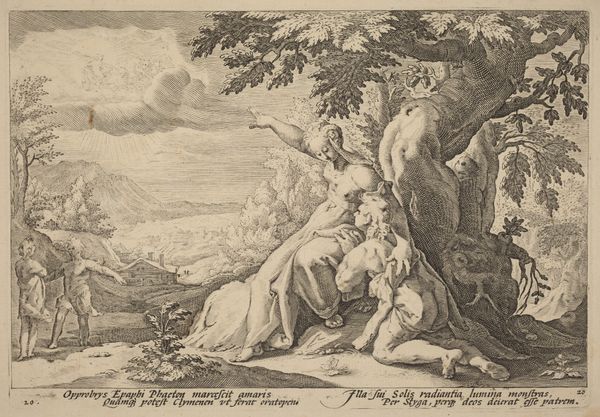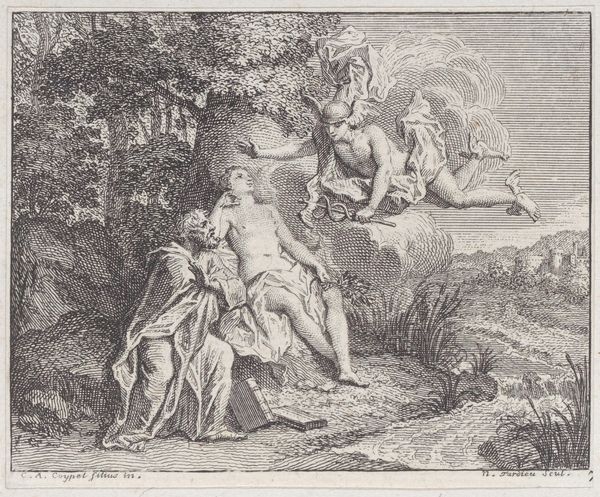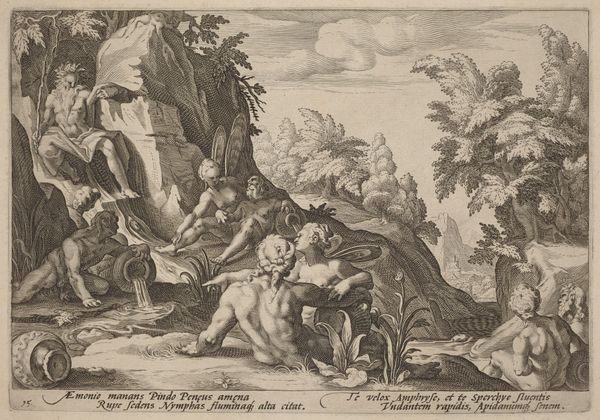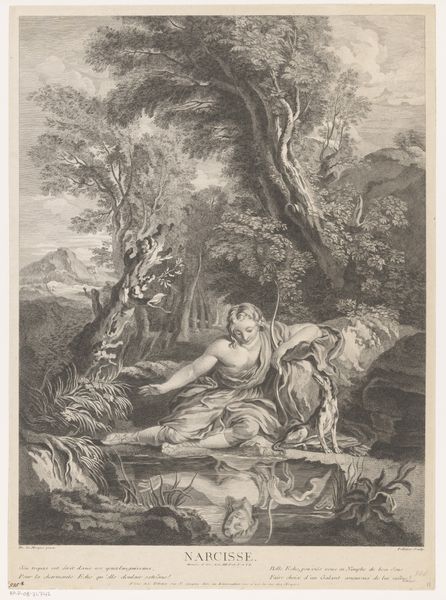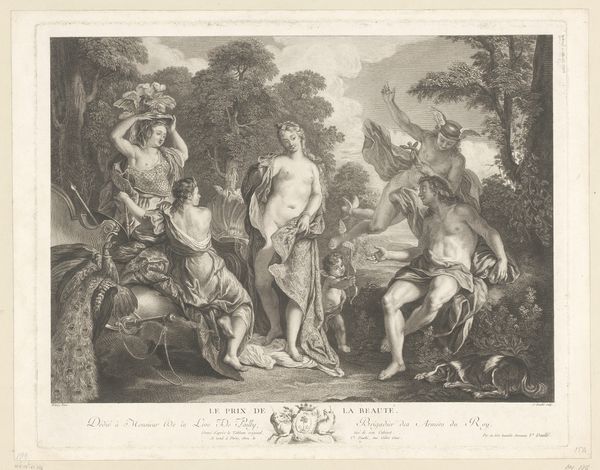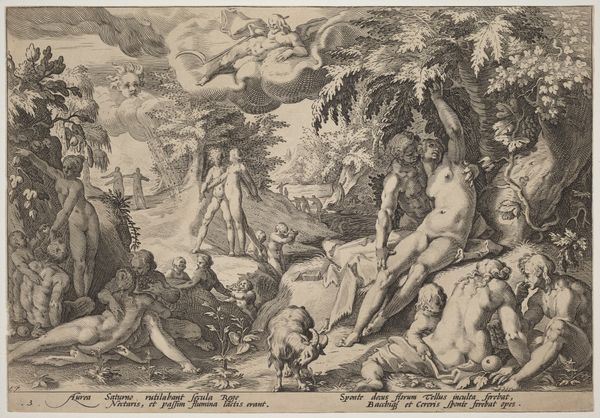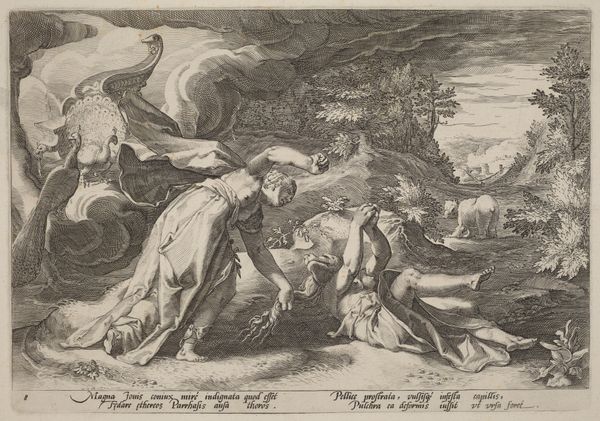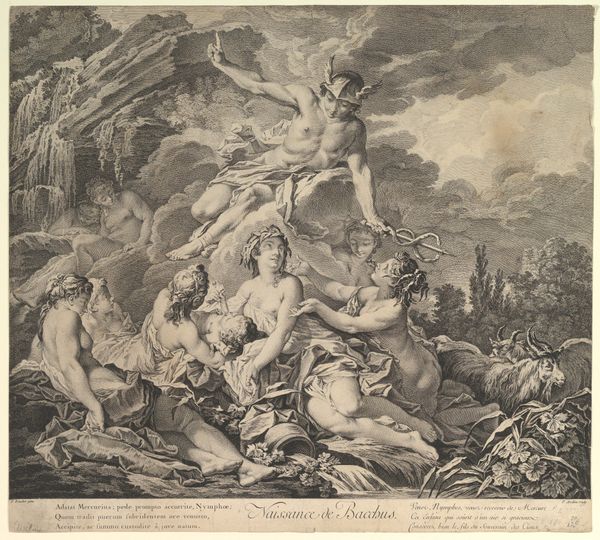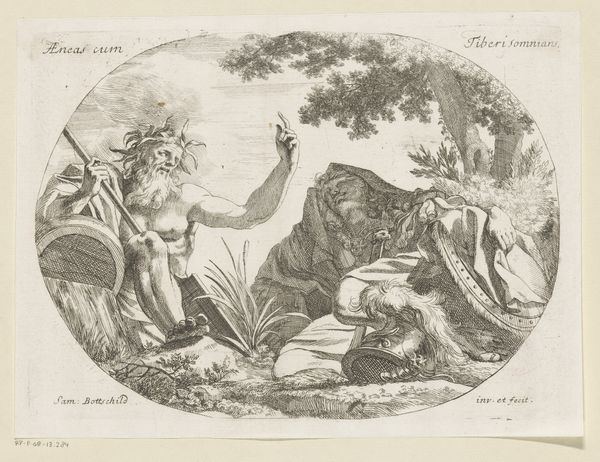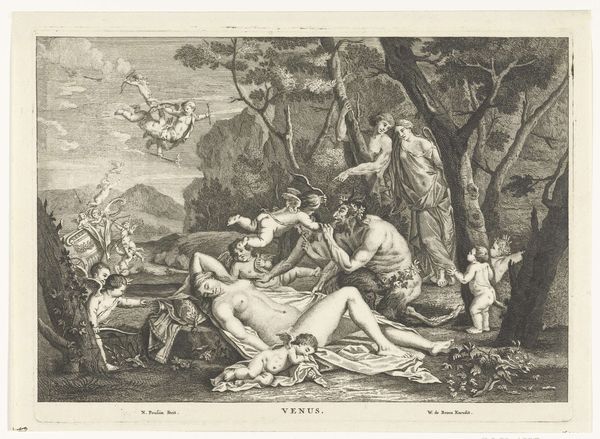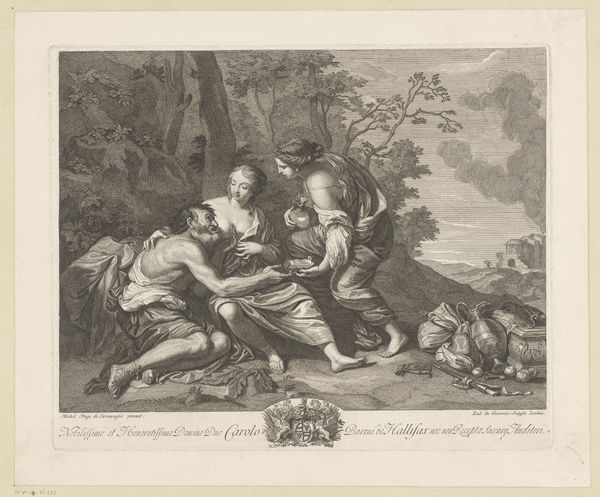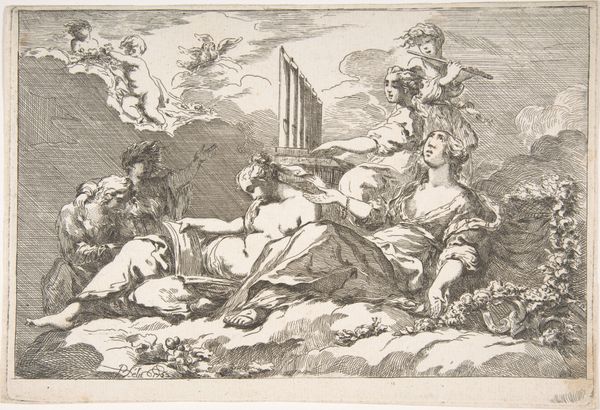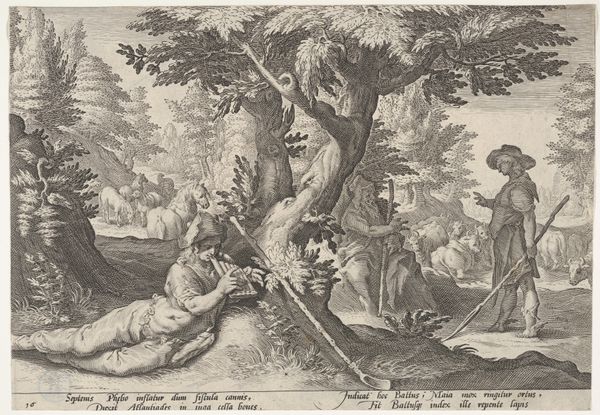
drawing, print, ink, engraving
#
drawing
#
ink drawing
# print
#
landscape
#
mannerism
#
ink
#
pencil drawing
#
history-painting
#
engraving
#
angel
Dimensions: 6 13/16 × 8 1/4 in. (17.3 × 21 cm)
Copyright: Public Domain
Editor: Here we have Jan Muller's "Hagar in the Desert Consoled by an Angel," created sometime between 1586 and 1596. It's an engraving. The scene has this striking contrast—the harsh, unforgiving landscape versus the tenderness of the angel's gesture. How do you interpret this work, considering its historical context? Curator: This piece speaks volumes about the politics of imagery in the late 16th century. Mannerism, as we see here, thrived on theatricality and complex allegories. Think about the role of religious narratives in shaping social norms. Hagar, an outcast woman, being comforted by an angel… It’s not just a depiction of a biblical scene. It’s a carefully constructed statement about compassion and perhaps even a subtle critique of social hierarchies. Consider the intended audience – wealthy patrons likely displaying such prints. What message do you think they sought to convey, or to reinforce for themselves, through its display? Editor: So, it's not just about the story itself, but also about how it's used? Perhaps it served as a reminder of charitable obligations, or even as a means to project an image of piety and benevolence. Curator: Precisely. Museums and galleries function as gatekeepers, deciding which narratives are amplified. A piece like this, hanging in a prominent collection, gains a different kind of power. How does its public display shape contemporary understandings of the past? Editor: That's fascinating. I hadn't considered how the act of display itself contributes to the artwork's meaning. It makes you wonder about the stories that *aren't* being told, and the voices that remain unheard. Curator: Indeed. And thinking about the public role of art means always questioning whose stories are being validated, and for what purpose.
Comments
No comments
Be the first to comment and join the conversation on the ultimate creative platform.
